

Jacob McAlpin- NanoJapan 2012
Louisiana State University
Major/s: Materials Chemistry
Graduation: May 2014
NJ Research Lab: Prof. Kazuhisa Sueoka, Hokkaido University
NJ Research Project: Direct Comparison Between Side and End-Contact Geometry on Carbon Nanotube Field-Effect Transistors
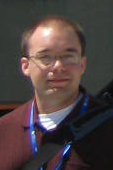
"So what does it mean to be a NanoJapan alumnus today? I would say the biggest impact is that I am more culturally aware… of my own culture. Here are the two major contributors to this realization: 1) I am able to see my culture from an outside perspective and 2) Japanese people commonly asked me to describe where I was from. The outside perspective is important because it is quite easy to not realize things which are abnormal. However, these conversations required me to study the place where I spent all my life and decide what was unique and special about it. The result was first the gaining of additional knowledge followed by an overall stronger connection to my homeland." ~ Jacob McAlpin, Lousiana State University
Why NanoJapan?
NanoJapan is important because it exposes a new generation of engineers and scientists to a culture that contains many of the leading experts in their intended fields. Having cross-cultural experiences is important because ignorance to another culture leads to misunderstandings and poor communication, both of which are poison in research. For researchers, poor communication results in bad data, wasted time, and failed experiments which will stall even the most promising of projects.
I choose to apply to NanoJapan as it will be a great enhancement to my degree in materials chemistry. Back in the 1990s when world economies were doing well, Japan took the initiative to invest in materials research, and the investment has paid off incredibly. Japan leads the world in the discovery of novel systems, all of which have been dependent on skillful synthesis*.
Being in Japan for the summer was a great experience. I was able to gain firsthand experience working in a foreign land where my years of cultural context go out the window. Many mannerisms and expressions that are mundane to me in America were complete gibberish when seen by or told to a Japanese person. I also had the chance to experience such adventures as ordering from a restaurant where I couldn’t read the menu and getting a haircut without knowing what the barber was saying. The experience allowed me to mature and discover the basic principles behind communication.
My goals for this summer were to:
NanoJapan Alumni Follow-on Project
For my follow-on project, I mostly followed the idea that I proposed in my application. I visited a rural public school to talk about science and research followed by the performance of an interesting science demonstration. This was done near the last day of the academic year at Converse school in Converse, LA. The school contains all grade levels from pre-K to 12 and totals around ~550 students. I gave my presentations to the 8th grade science classes along with the biology and environmental science students at the high school level (mostly 10th grade). I visited five classes of about 20 students each totaling ~100 people.
Impact can be hard to judge, but I am hopeful that it was effective. I started with an informal discussion about research that I eventually led into my demonstration. For the demonstration, I choose to explore the nature of light. There were many considerations behind the choice of demonstrating light. First, the only equipment I needed were laser pointers (which I own in three colors), jars to water, tap water (distilled actually doesn’t work), and food coloring. Another consideration was that NanoJapan is concerned with terahertz dynamics. While not quite the same, visual light provides the opportunity to observe some of the phenomena that are being researched with human senses. Finally, light is pervasive. Light surrounds us every day, but it causes confusion even among the researchers who have devoted their lives to learning about it.
I feel that the presentation will have some effect because it helped students to think of science in a more complete way. If you simply think of science as one class of many, one set of rules among many, etc., then it simply becomes the work of scientists. I wanted to show how science can be integrated with everyday experience. Even though I came to talk about ‘science’, my presentation frequently referenced the visual arts and the manufacturing of light bulbs. I feel that many of the students previously developed this notion of a stereotypical scientist that portrays a man in a laboratory messing with beakers and test tubes. However, science can instill a sense of awe, even to professional scientists, as Randall Monroe so eloquently illustrates. The demonstration I performed was created in collaboration with fellow LSU Chemistry student Malcolm Davidson who wrote about it in the American Chemical Society (ACS) Undergraduate Blog. I did not create the shoebox spectrometer that he describes in the article because I did not have a good prism handy.
Further Research and Future Plans
After participating in NanoJapan, I have continued working in the lab of Dr. Julia Chan in the Chemistry department at LSU doing research in Solid State Materials. The Chan lab synthesizes novel intermetallic compounds with complex structures and studies their magnetism and electrical properties. I have presented my research nationally at ACS meetings and was the recipient of LSU Chemistry’s Undergraduate Research Award this past year.
In the sumer of 2013, I participated in the MIT Materials Processing Center (MPC) and Center for Materials Science and Engineering (CMSE) Summer Scholars Program. My research was in Computational Materials where I used Density Functional Theory (DFT) calculations to determine properties of metallic elements.
Research Project Overview: Direct Comparison Between Side and End-Contact Geometry on Carbon Nanotube Field-Effect Transistors
My project was to determine how placing the electrode on a carbon nanotube field-effect transistor affects its performance. The project will help me on several levels in my future in materials chemistry even if I never look at a carbon nanotube field-effect transistor again. One benefit is that the project gave me an understanding of how issues arise when using a new material for a well-known application. While the effects of contact geometry are well known for standard FETs, the one-dimensional nature of the CNT changes everything. Additionally, the experience in Japan has given me the chance to communicate with non-native English speakers. This requires some skill and practice that I would never have been able to obtain in my home university lab.
My lab group was very friendly and casual. They usually had some kind of outing every week and brought me along. As far as my project is concerned, I learned to use the equipment independently early in the summer. Even then, I could always (and often needed to) go to the lab members to ask where various items were stored or for reminders on small steps that I had forgotten in operating large equipment.
Daily Life in Japan
I would walk to my lab from my dorm in the morning. It was about 30 minutes of walking, but it could be shortened if one were to obtain a bicycle. The subway will probably not save you any time as it would only be a 1-station trip. I then proceeded to do research as instructed until lunchtime where I would usually go to the cafeteria. I then began work again until leaving time. Many labs in Japan work very late hours, but my lab would usually force me to go home around 5 (unless experiments required more time). I commonly ate supper at a konbini or such. Sometimes I would go to some nearby attractions, but most sightseeing was reserved for weekends.
Favorite Experience in Japan
Hiking Mt. Moiwa at the end of my stay in Sapporo. The top has a very nice observatory where you can see the city very well. In all directions, I could see places that I had visited during my internship. The music they played was nostalgic, and the entire experience gave me a great feeling that I had ‘conquered’ Sapporo.
Before I left for Japan I wish I had:
Studied more vocabulary. Just having vocabulary with little grammar can actually take you quite far, but I was unable to take advantage of this.
While I was in Japan I wish I had:
Brought my Nintendo DS. Generally there was a lot of waiting for experiments or transportation and a gaming device would have been nice.
Orientation Program Tips
You definitely want to stay together with the other NanoJapan students for most of the time. The subway can be complicated, but it isn’t too bad if you simply learn while following someone around for a few days. SUICA cards are quite convenient.
Mid-Program Meeting Tips
If you take some extra time off and can get there when it is offered, the “Walk in Kyoto, Talk in English” tour is pretty good. You get to explore some non-touristy area and learn a lot about Kyoto. It cost 2000 yen.
Tips on Working With Your Research Lab
Become great friends with Agus-san in the Sueoka Lab. He speaks English very well and is extremely reliable. The lab speaks ‘fair’ English. Certainly try and use your Japanese whenever you can. The language barrier can be high, but it is never undefeatable.
Tips on Living in Sapporo
There is less English in Sapporo than in Tokyo, but there is enough that you should not have much of a problem. You will see a place called Seicomart everywhere. This is a convenience store such as 7-11 or Lawsons, but it is Hokkaido only.
Japanese Language Tips
Know your katakana, no exceptions. This is the absolutely most crucial skill you can have as you will need be able to understand most things written in katakana. For examples, many nanoscience terms are written in katakana. I wish I had focused a bit more on vocabulary and a little less on sentence structure. If you can say the right words, people will be intelligent enough to know what you mean from context.
Other Tips
Gifts: Things branded with your university are good. Things that are local to your hometown/state. Remember that any candy/food has to stay good through a trip across the Pacific and at least a month without refrigeration. Thank you cards (mine had LSU's Tiger Stadium on them).
Eat: Soup Curry, Miso Ramen, The melon soda from Seicomart. (Or a $35 yubari melon, your choice. I picked soda. The soda at Seicomart actually has particles of melon in it; it is not like the melon Fanta.), Shiroi Koibito.
Buy: Hokkaido Caramel (good souvenir, small and come in interesting flavors)
What to Do & Places to Visit:
Photos and Excerpts from Weekly Reports
Week One - Arrival in Japan: In some ways, Tokyo is like most big cities. It has abundant areas for sightseeing, highly developed public transportation, and walking is by far the best mode of transport. The main surprise for me has been the localized pockets of history in the city. In a random section of street, you will see a Shinto shrine between two modern buildings with vending machines in front. It is interesting to see how people in Tokyo seem to have done very little to incorporate the shrine and its architecture into the modern. I have read that other cities in Japan have done more to incorporate the old into the new, and this is something I am interested in seeing as time goes on. My experience with the Japanese language over this summer will be unique. First, I am in a class of my own (I mean it literally, but I like to pretend it is figuratively true too.). Not only am I in a class of one, I am not even in the same building as the other NanoJapan students. In addition, my one semester of Japanese before LSU cut the program to save money landed me in an awkward middle between absolute beginner and skilled beginner. Having one-on-one practice for three straight hours is great. Between my class over a year ago and independent study, I have seen most of the topics covered in class, but I have never had the chance to practice any of it. Without having the opportunity to use the knowledge, it simply went in one ear and out the other. The downside to the individual instruction is that it is stressful. The class requires constant active listening and speaking, and there is no break for the teacher to talk to other students. Fortunately, the constant engagement takes up all my brainpower and I do not have the chance to realize such things as how sleepy I might be from jet lag. The most difficult part of being in Tokyo is communication. While it is easy to learn a phrase to order a hamburger, things get complicated fast if the cashier asks if you want fries (This example is metaphorical, not literal. I have not ordered a hamburger in Japan yet.). You quickly learn how to learn how to add hand gestures and basic words to your vocabulary to get the basic ideas across. Even then, sometimes you just have to smile, nod, and hope.
Week Two - Riding the Subway: Public transportation in Japan runs so smoothly that I have fallen asleep a few times while riding it. The primary difference from the United States is the timeliness. The posted times for trains arriving are the exact times that trains will be arriving. However, even if you miss one train, there will usually be one coming shortly after it. It seems that some of the code of politeness which is pervasive throughout Japanese society seems to go out the window on the subway (or at least be reduced). Getting in and out of cars before the doors close usually involves a lot of bumping and shoving and apologies are rarely exchanged. However, most people on the subway read or diddle with their phones, and people are usually quiet out of respect for this behavior. Public transport can take you nearly anywhere in Japan, but the same is not true of the United States. However, I personally cannot imagine a system of the same scope to exist in America for 2 primary reasons: (1) the population density of Japan is 10 times greater than America and (2) Americans value the independence that personal transportation alone provides. However, the core values of Japan are in line for there to be national public transportation which is quite convenient.
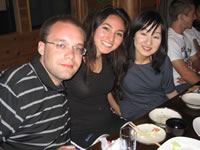 Week 3 - Trip to Minami-Sanriku: The earthquake in Japan on 3/11 and especially the subsequent tsunami
caused absolute devastation. While the recovery has been quick and
effective in populated areas like Sendai, small villages like
Minami-Sanriku are still in ruin. Building foundations can be found all
over the ground along with piles of cars and debris. Yet the kids that
we met at the elementary school were full of life and vigor. Also, the
adults in the area had a strong drive to return the city back into a
place where life can occur again. If the children can maintain even
some of their energy, Minami-Sanriku can once again become a lively
place filled with business and families. The absolute best things
Americans can provide these people is time. Time to rebuild houses,
time to hear their stories, etc.
Week 3 - Trip to Minami-Sanriku: The earthquake in Japan on 3/11 and especially the subsequent tsunami
caused absolute devastation. While the recovery has been quick and
effective in populated areas like Sendai, small villages like
Minami-Sanriku are still in ruin. Building foundations can be found all
over the ground along with piles of cars and debris. Yet the kids that
we met at the elementary school were full of life and vigor. Also, the
adults in the area had a strong drive to return the city back into a
place where life can occur again. If the children can maintain even
some of their energy, Minami-Sanriku can once again become a lively
place filled with business and families. The absolute best things
Americans can provide these people is time. Time to rebuild houses,
time to hear their stories, etc.
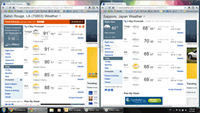 Week 4 - First Week in Research Lab: While I am the only NanoJapan student researching at Hokkaido University, I am lucky to have Jason Ball (graduate student from Prof. Kono’s lab) working in the same lab and living 2 doors down. On day one, we walked to the lab together and met with Sueoka-sensei. Sueoka-sensei then proceeded to give me his lab tour where he explained the overall theme of his research and showed his 9001 instruments for doing research. My project in the lab will be to research how different types of end contacts affect carbon nanotube field-effect transistors. I do not know yet how this will done as my graduate student has yet to show up to work (some students are starting to worry about him). Fortunately, Jason has experience making carbon nanotube field-effect transistors in Sueoka’s lab so he has been able to show me how to use most of the equipment that I will be using. Everyone in the lab speaks English (to a degree), and they were surprised when I greeted them with はじめまして. I do not think that communication will necessarily be difficult, but there will probably be challenges along the way. On day one, I attended group meeting (in Japanese) and the speakers gave handouts in ‘English’. Unsurprisingly, I wasn’t about to understand what they were saying. However, the ‘English’ on the handout was filled with awkward capitalization, subject-verb agreement errors, and the occasional word that I had never seen before. I live in the International House at Hokkaido University. It is technically smaller than my US dorm room, but it does have more area per person (2-person room in US, 1-person room in Japan). The staff is friendly, and the location is very convenient. I can walk to lab, Sapporo Station, and many other landmarks. So far, my greatest challenge has been getting use to always taking my shoes off walking into lab and my housing. I learned quickly to keep the laces loose, but it is mildly annoying to walk around with loose shoes on. It really doesn’t matter much, but it is an adjustment. However, the highest temperature in Sapporo this week is 70°F. In Baton Rouge, the absolute lowest temperature this week is 70°F. I will like it here.
Week 4 - First Week in Research Lab: While I am the only NanoJapan student researching at Hokkaido University, I am lucky to have Jason Ball (graduate student from Prof. Kono’s lab) working in the same lab and living 2 doors down. On day one, we walked to the lab together and met with Sueoka-sensei. Sueoka-sensei then proceeded to give me his lab tour where he explained the overall theme of his research and showed his 9001 instruments for doing research. My project in the lab will be to research how different types of end contacts affect carbon nanotube field-effect transistors. I do not know yet how this will done as my graduate student has yet to show up to work (some students are starting to worry about him). Fortunately, Jason has experience making carbon nanotube field-effect transistors in Sueoka’s lab so he has been able to show me how to use most of the equipment that I will be using. Everyone in the lab speaks English (to a degree), and they were surprised when I greeted them with はじめまして. I do not think that communication will necessarily be difficult, but there will probably be challenges along the way. On day one, I attended group meeting (in Japanese) and the speakers gave handouts in ‘English’. Unsurprisingly, I wasn’t about to understand what they were saying. However, the ‘English’ on the handout was filled with awkward capitalization, subject-verb agreement errors, and the occasional word that I had never seen before. I live in the International House at Hokkaido University. It is technically smaller than my US dorm room, but it does have more area per person (2-person room in US, 1-person room in Japan). The staff is friendly, and the location is very convenient. I can walk to lab, Sapporo Station, and many other landmarks. So far, my greatest challenge has been getting use to always taking my shoes off walking into lab and my housing. I learned quickly to keep the laces loose, but it is mildly annoying to walk around with loose shoes on. It really doesn’t matter much, but it is an adjustment. However, the highest temperature in Sapporo this week is 70°F. In Baton Rouge, the absolute lowest temperature this week is 70°F. I will like it here.
Week 5 - Critical Incident Analysis: Usually poor communication is easy to get through. If you say that your Japanese isn’t good (sometimes a confused look is enough), then the other speaker will start going extremely slow and use lots of hand gestures. One modestly interesting example of a miscommunication I had was in English with Packard-sensei. Emma and I were walking with Packard-sensei in Nikko towards a restaurant, and Packard-sensei was trying to ask us about some computer issues she had. I forget how she described her problem, but I had no clear answer to why that would happen. If I were to have the same problem on my computer, I would probably hit buttons until it finally resolved itself. Not thinking too much before I said anything, I gave my Jr. High computer science teacher’s answer to that type of computer issue: Gremlins. I forgot to think that ‘gremlin’ is not exactly a common word. Packard-sensei first thought I was giving a term for some kind of computer virus and began to look concerned. Emma saved the day by clarifying that by ‘gremlins’ I was referring to something similar to Japanese ‘oni’. Were the situation to occur again, I would probably give the boring answer that I do not know. I try to be humorous when I can so it has been difficult for me to adjust to making my English ‘boring’. However, it is necessary as non-native speakers cannot understand my punny remarks.
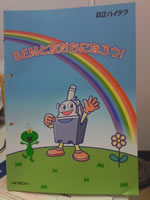 Week 6 - Research in Japan vs. the U.S.: The most substantial difference in my Japanese lab from my American lab
is that I have to take off my shoes here. Fortunately, my project
requires that I change into clean room shoes anyway so the difference
isn’t too bad. As far as interpersonal communications go, I think most
of the interactions between students are pretty casual. I try and be
more formal with my words than I would be in the US, but this is for
understandability, not politeness (see last week about the importance of
being boring). Anecdote time! And what better way to illustrate how people work in the
lab than a discussion of what they do outside of the lab. A few days
ago, most of the students in the group (myself included) went out for
kaiten sushi. There was a sushi item on the menu that I had eaten
before but not known what was. I asked my graduate student, and he
eventually got through to me that it was made of fish eggs. However, he
mistook my curiosity as interest and ordered it for me. To avoid any
conflict, I just went ahead and ate it without mentioning anything. Anecdote Point 1: If you have a question, ask. Yes, there are many things about the lab and equipment that I don’t know. However, between Kato-san (my grad student), Agus-san (post-doc), and Jason (Kono’s student) I can almost always get an English answer. Anecdote Point 2: If the answer gives more questions, ask. Just because an answer is in English doesn’t mean I understand it. For the sushi, the fish eggs were molded into some shape which made it difficult for me to process that they were eggs. However, I eventually realized that they had molded the shape after Kato kept trying to explain that they were in fact fish eggs. Likewise, an answer in the lab may not actually answer the question so I need to work with the answerer until an understanding is reached. Anecdote Point 3: When things go wrong, just roll with the punches and move on. I never mentioned that I wanted the sushi, but my interest in made Kato-san believe I did. Since it had already been ordered, it was easier for everyone to just go ahead and eat it (even if it didn’t taste good). In lab, my nanotubes have shown strong resistance to existing. However, I just have to stay persistent and adjust any likely cause for the nanotubes to have not grown.
Week 6 - Research in Japan vs. the U.S.: The most substantial difference in my Japanese lab from my American lab
is that I have to take off my shoes here. Fortunately, my project
requires that I change into clean room shoes anyway so the difference
isn’t too bad. As far as interpersonal communications go, I think most
of the interactions between students are pretty casual. I try and be
more formal with my words than I would be in the US, but this is for
understandability, not politeness (see last week about the importance of
being boring). Anecdote time! And what better way to illustrate how people work in the
lab than a discussion of what they do outside of the lab. A few days
ago, most of the students in the group (myself included) went out for
kaiten sushi. There was a sushi item on the menu that I had eaten
before but not known what was. I asked my graduate student, and he
eventually got through to me that it was made of fish eggs. However, he
mistook my curiosity as interest and ordered it for me. To avoid any
conflict, I just went ahead and ate it without mentioning anything. Anecdote Point 1: If you have a question, ask. Yes, there are many things about the lab and equipment that I don’t know. However, between Kato-san (my grad student), Agus-san (post-doc), and Jason (Kono’s student) I can almost always get an English answer. Anecdote Point 2: If the answer gives more questions, ask. Just because an answer is in English doesn’t mean I understand it. For the sushi, the fish eggs were molded into some shape which made it difficult for me to process that they were eggs. However, I eventually realized that they had molded the shape after Kato kept trying to explain that they were in fact fish eggs. Likewise, an answer in the lab may not actually answer the question so I need to work with the answerer until an understanding is reached. Anecdote Point 3: When things go wrong, just roll with the punches and move on. I never mentioned that I wanted the sushi, but my interest in made Kato-san believe I did. Since it had already been ordered, it was easier for everyone to just go ahead and eat it (even if it didn’t taste good). In lab, my nanotubes have shown strong resistance to existing. However, I just have to stay persistent and adjust any likely cause for the nanotubes to have not grown.
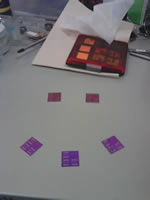 Week 7 - Preparing for the Mid-Program Meeting: My greatest personal accomplishment in Japan happened this past weekend. I was going to go meet Eric in Hakodate, and I purchased a non-reserved ticket for a train that was exclusively reserved seating. Fortunately, I sat in the seat of a nice lady (did not speak any English), and she managed to communicate to me that I needed to upgrade my ticket. (The ‘accomplishment’ part has not happened yet.) Once the ride began, I started a conversation with the nice lady and was actually able to understand (almost) everything that she was saying. It was the longest conversation that I have had with someone with no English at all. My greatest personal challenge has been the amount that I have to focus on what and how I say things, especially in English. For example, our lab had a barbeque this week and seeing the grill made me think of a grate pun. However, I had to accept that it would just fly over non-fluent English speakers (it even flew right over Jason) and not say it. At other times, while everyone in the lab speaks some English, they cannot understand full-paced, colloquial English. With the extra thinking time I have from speaking slowly, I have come to realize just how many metaphors and similes I use (they are all over my other weekly reports). I can filter them out when I talk slowly (direct statements are easier to understand so I try to use them), but the figurative language comes out on its own when speaking at a normal pace. My anticipated research timeline was thrown out the door by my nanotubes resistance to existence. However, we have found a way to make the tubes grow. By arranging my (unsuccessful) chips into a happy face, it makes my experiment look like a success. At least the colors are pretty. (Geaux Tigers)
Week 7 - Preparing for the Mid-Program Meeting: My greatest personal accomplishment in Japan happened this past weekend. I was going to go meet Eric in Hakodate, and I purchased a non-reserved ticket for a train that was exclusively reserved seating. Fortunately, I sat in the seat of a nice lady (did not speak any English), and she managed to communicate to me that I needed to upgrade my ticket. (The ‘accomplishment’ part has not happened yet.) Once the ride began, I started a conversation with the nice lady and was actually able to understand (almost) everything that she was saying. It was the longest conversation that I have had with someone with no English at all. My greatest personal challenge has been the amount that I have to focus on what and how I say things, especially in English. For example, our lab had a barbeque this week and seeing the grill made me think of a grate pun. However, I had to accept that it would just fly over non-fluent English speakers (it even flew right over Jason) and not say it. At other times, while everyone in the lab speaks some English, they cannot understand full-paced, colloquial English. With the extra thinking time I have from speaking slowly, I have come to realize just how many metaphors and similes I use (they are all over my other weekly reports). I can filter them out when I talk slowly (direct statements are easier to understand so I try to use them), but the figurative language comes out on its own when speaking at a normal pace. My anticipated research timeline was thrown out the door by my nanotubes resistance to existence. However, we have found a way to make the tubes grow. By arranging my (unsuccessful) chips into a happy face, it makes my experiment look like a success. At least the colors are pretty. (Geaux Tigers)
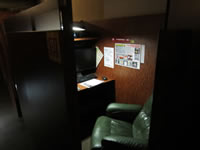 Week 8 - Reflections on Japanese Culture & Language: One of the most difficult conversations I have had in Japanese was at the front desk of Popeye Media Café in Kyoto (recommended by Wikitravel and totally worth losing some sleep quality for the price and novelty). The girl at the counter had extremely little English, almost comparable to my level of Japanese. They had a sheet of phrases with “English” translations, but the translations were so bad that it was almost easier to understand the Japanese. The place has about five different options for types of desks (available in smoking and nonsmoking), and cost is heavily dependent on the number of hours you stay. I walked in with a rough idea of what they offered, but there were many things that I could not understand from their webpage. So we have a situation with many possible combinations, and communicating the wrong one will cause great discomfort in the back or wallet. Most places in Japan (including this Media Café) have their ‘menu’ or ‘options’ available pictographically at the desk making pointing sufficient, but the desk still needed to tell me other things (such as the fact that drinks are free, how payment is handled, etc.). To survive this situation, I learned to listen for keywords in their speech and induce the rest from context. When I had to speak back, I used choppy sentences with all of the needed keywords so they could piece together a coherent thought. At the end of the day, everyone succeeded in their communication, and I had a place to stay for the night. See the photo of my ‘room’. From this experience, I learned the importance of context in communication. The scenario reminds me of a presentation I heard by the Center for Academic Success at LSU. The speaker wrote the following on the white board: C _ T . When she asked everyone to complete the word, everyone said, “cat.” She then asked us to think about why we came to that conclusion even though ‘cot’ and ‘cut’ are perfectly valid answers. It was our shared educational experience and images that led us to the same answer. This story was then turned into a warning about using other student’s (or a professor’s) notes to succeed in a class. Everyone will subconsciously leave out information which seems obvious to them but will leave another person without the needed information. I feel this kind of scenario is also true for communication in a foreign country. If you know what someone would say in a certain situation, then it is easy to figure out what they are saying even when your vocabulary is quite limited. However, if they say things that are strange and unusual, then it can be hard to understand regardless of how simple or direct the language is. The most effective tool I have found for improving my Japanese is http://iknow.jp . It is a website with vocabulary drills designed to teach various levels of Japanese, and I am working on the Core 1000 (1000 most common words in Japanese conversation). While I will not highly recommend it to anyone (it does cost 1000 yen per month), it is perfect for my level of Japanese. I know many sentence structures and verb conjugations, but my vocabulary is so weak that I cannot have any kind of conversation beyond an introductory style talk. This website has helped me to learn words and recognize their kanji (I believe you can set the software to romanji or hiragana, but the kanji mode is most useful). I have only seen about 300 of the Core 1000, but my reading and vocabulary has certainly improved enough to make it worth the 1000 yen.
Week 8 - Reflections on Japanese Culture & Language: One of the most difficult conversations I have had in Japanese was at the front desk of Popeye Media Café in Kyoto (recommended by Wikitravel and totally worth losing some sleep quality for the price and novelty). The girl at the counter had extremely little English, almost comparable to my level of Japanese. They had a sheet of phrases with “English” translations, but the translations were so bad that it was almost easier to understand the Japanese. The place has about five different options for types of desks (available in smoking and nonsmoking), and cost is heavily dependent on the number of hours you stay. I walked in with a rough idea of what they offered, but there were many things that I could not understand from their webpage. So we have a situation with many possible combinations, and communicating the wrong one will cause great discomfort in the back or wallet. Most places in Japan (including this Media Café) have their ‘menu’ or ‘options’ available pictographically at the desk making pointing sufficient, but the desk still needed to tell me other things (such as the fact that drinks are free, how payment is handled, etc.). To survive this situation, I learned to listen for keywords in their speech and induce the rest from context. When I had to speak back, I used choppy sentences with all of the needed keywords so they could piece together a coherent thought. At the end of the day, everyone succeeded in their communication, and I had a place to stay for the night. See the photo of my ‘room’. From this experience, I learned the importance of context in communication. The scenario reminds me of a presentation I heard by the Center for Academic Success at LSU. The speaker wrote the following on the white board: C _ T . When she asked everyone to complete the word, everyone said, “cat.” She then asked us to think about why we came to that conclusion even though ‘cot’ and ‘cut’ are perfectly valid answers. It was our shared educational experience and images that led us to the same answer. This story was then turned into a warning about using other student’s (or a professor’s) notes to succeed in a class. Everyone will subconsciously leave out information which seems obvious to them but will leave another person without the needed information. I feel this kind of scenario is also true for communication in a foreign country. If you know what someone would say in a certain situation, then it is easy to figure out what they are saying even when your vocabulary is quite limited. However, if they say things that are strange and unusual, then it can be hard to understand regardless of how simple or direct the language is. The most effective tool I have found for improving my Japanese is http://iknow.jp . It is a website with vocabulary drills designed to teach various levels of Japanese, and I am working on the Core 1000 (1000 most common words in Japanese conversation). While I will not highly recommend it to anyone (it does cost 1000 yen per month), it is perfect for my level of Japanese. I know many sentence structures and verb conjugations, but my vocabulary is so weak that I cannot have any kind of conversation beyond an introductory style talk. This website has helped me to learn words and recognize their kanji (I believe you can set the software to romanji or hiragana, but the kanji mode is most useful). I have only seen about 300 of the Core 1000, but my reading and vocabulary has certainly improved enough to make it worth the 1000 yen.
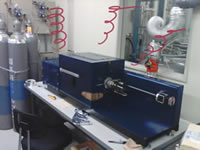 Week 9 - Critical Incident Analysis in the Lab: The best example that I remember happened with someone who is not from Japan. The girl who sits next to me in the office is from Vladivostok, Russia, which is actually colder than Sapporo. She came into lab one day complaining about the heat outside, and I had happened to have the weather.com forecast for Baton Rouge v. Sapporo open on my computer (I still look at it every few days). I showed the forecast to her (careful to change the temperature to Celsius first), and she was in absolute awe that people could actually live in those conditions. I then had to explain just how people cope with these temperatures. This event was memorable because I was talking with someone who had never experienced anything like what I have known for 20 summers. We had simply grown up in completely different areas, and she was genuinely interested in learning how other people live. A difficulty could have occurred if I had forgotten to change the temperature units. It is easy to forget that American units differ from most of the world and most foreigners have no idea what 96°F feels like or how big a gallon of milk is. On many occasions, I have to pull out my phone and do the conversions (fortunately, I have most of them memorized as the PicCell phone conversion tool is quite weak). Even when I was at AJALT, the teachers would ask what the weather was like in Louisiana or how heavy something was, and I would have to pull out the calculator.
Week 9 - Critical Incident Analysis in the Lab: The best example that I remember happened with someone who is not from Japan. The girl who sits next to me in the office is from Vladivostok, Russia, which is actually colder than Sapporo. She came into lab one day complaining about the heat outside, and I had happened to have the weather.com forecast for Baton Rouge v. Sapporo open on my computer (I still look at it every few days). I showed the forecast to her (careful to change the temperature to Celsius first), and she was in absolute awe that people could actually live in those conditions. I then had to explain just how people cope with these temperatures. This event was memorable because I was talking with someone who had never experienced anything like what I have known for 20 summers. We had simply grown up in completely different areas, and she was genuinely interested in learning how other people live. A difficulty could have occurred if I had forgotten to change the temperature units. It is easy to forget that American units differ from most of the world and most foreigners have no idea what 96°F feels like or how big a gallon of milk is. On many occasions, I have to pull out my phone and do the conversions (fortunately, I have most of them memorized as the PicCell phone conversion tool is quite weak). Even when I was at AJALT, the teachers would ask what the weather was like in Louisiana or how heavy something was, and I would have to pull out the calculator.
Photo: The nanotube furnace in the Sueoka lab this week.I came back to lab after the midprogram meeting ready to put in the long hours and hard work to start getting data, and the nanotube furnace breaks. At least I have poster time.
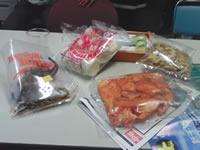 Week 10 - Career Interview: For my interview, I chose to talk to Agus Subagyo. Agus-san came to Japan for college and stayed in Japan to work after earning his degrees. He earned his undergraduate in electrical engineering and his masters in information science at the same university. He then came to Hokkaido University for his PhD where his is now employed as a ‘research staff’ in the Sueoka lab. He is not a ‘professor’ as his job is not permanent, and he is not responsible for teaching classes. His job responsibilities seem to be similar to that of a post-doc in America. He is mostly autonomous with his research, but he aides many of the graduate students in the Sueoka lab as he is quite familiar with all of the equipment. I understood that he is not required to aid the graduate students, but he enjoys doing it as it helps him with his research too. He mentioned his job was not permanent, but he did not seem to mention anything specific about what kind of job he wanted in the future. Research funding was an interesting section of our conversation. One of the most shocking things for me in the lab here in Sapporo was when I saw a Bruker D8 X-ray diffractometer with a log that showed that it has been used four times this year. Last summer alone, I alone used a Bruker D8 X-ray diffractometer around 25 times in my lab. In America, to have a machine like this funded, it basically needs to be used every day and on most weekends. That does not seem to be the case here. However, Agus-san did mention that he sees a trend toward a system more like the U.S.. Sueoka-sensei has recently submitted a proposal to develop a facility for the entire university (and industry) to use instead of just the Sueoka lab. Agus-san took care to mention that this was not something that government had encouraged him to do. While it seems that government does a lot to fund research and equipment, it was interesting to hear that they do little to fund the students. Apparently, the only kind of ‘scholarship’ in Japan is a need-based system where they can reduce the cost of attendance. However, students in Japan do not pay for college upfront. They pay their balance after they have started working, and these ‘loans’ are interest free. The culture of paying for your own graduate school seems to have an unintended side effect: some students don’t feel obligated to show up that often (at least in the Sueoka lab). Because it is their money, the professors do not punish them for their absence. The important thing is that they have a thesis done when it is time to graduate. Agus has a unique perspective on international research being from Indonesia but working in Japan. Back when he first obtained his job, he said it was much harder for foreigners to find jobs in Japan than it is now. He mentioned that he was actually quite lucky to be from Indonesia as the Japanese seemed more accepting of Indonesians than Koreans or Chinese. He mentioned that companies are now looking for foreigners as Japan cannot strive in an international climate without an international workforce.
Week 10 - Career Interview: For my interview, I chose to talk to Agus Subagyo. Agus-san came to Japan for college and stayed in Japan to work after earning his degrees. He earned his undergraduate in electrical engineering and his masters in information science at the same university. He then came to Hokkaido University for his PhD where his is now employed as a ‘research staff’ in the Sueoka lab. He is not a ‘professor’ as his job is not permanent, and he is not responsible for teaching classes. His job responsibilities seem to be similar to that of a post-doc in America. He is mostly autonomous with his research, but he aides many of the graduate students in the Sueoka lab as he is quite familiar with all of the equipment. I understood that he is not required to aid the graduate students, but he enjoys doing it as it helps him with his research too. He mentioned his job was not permanent, but he did not seem to mention anything specific about what kind of job he wanted in the future. Research funding was an interesting section of our conversation. One of the most shocking things for me in the lab here in Sapporo was when I saw a Bruker D8 X-ray diffractometer with a log that showed that it has been used four times this year. Last summer alone, I alone used a Bruker D8 X-ray diffractometer around 25 times in my lab. In America, to have a machine like this funded, it basically needs to be used every day and on most weekends. That does not seem to be the case here. However, Agus-san did mention that he sees a trend toward a system more like the U.S.. Sueoka-sensei has recently submitted a proposal to develop a facility for the entire university (and industry) to use instead of just the Sueoka lab. Agus-san took care to mention that this was not something that government had encouraged him to do. While it seems that government does a lot to fund research and equipment, it was interesting to hear that they do little to fund the students. Apparently, the only kind of ‘scholarship’ in Japan is a need-based system where they can reduce the cost of attendance. However, students in Japan do not pay for college upfront. They pay their balance after they have started working, and these ‘loans’ are interest free. The culture of paying for your own graduate school seems to have an unintended side effect: some students don’t feel obligated to show up that often (at least in the Sueoka lab). Because it is their money, the professors do not punish them for their absence. The important thing is that they have a thesis done when it is time to graduate. Agus has a unique perspective on international research being from Indonesia but working in Japan. Back when he first obtained his job, he said it was much harder for foreigners to find jobs in Japan than it is now. He mentioned that he was actually quite lucky to be from Indonesia as the Japanese seemed more accepting of Indonesians than Koreans or Chinese. He mentioned that companies are now looking for foreigners as Japan cannot strive in an international climate without an international workforce.
Photo: Indonesian Omiyage brought to the Sueoka lab after Agus-san’s vacation. It is amazing just how similar they are to Louisiana dishes. The chicken feet taste like cracklins, and I have already theorized a version of kripik balado using tabasco sauce.
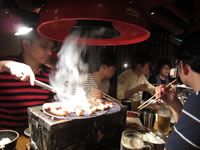 Week 11 - Final Week in Japan: Even before the program, I intended to pursue a PhD. As I still intend
to work in the synthesis of novel materials, my experience in Japan will
be quite valuable. Japan has been a leader in materials science, and
this experience will give me a better perspective to approach Japanese
collaborators. My final week in lab was rough. I started the week with no data and no
devices. At the end of the week, I still had no data, but managed to
have a presentable project. My lab threw me a yakiniku going away party
where I ate many interesting meats. One frustration of being in Japan was
constantly watching my English. Even though most people in the lab
spoke good English, they are not aware of the plethora of colloquialisms
and esoteric verbiage that I utilize during pontification. Therefore, I
had to be cautious of what I said while I can speak freely to native
English speakers. This process gave me a sense of the diversity even
within the English language.Of course there are things I will miss in Japan. On the shallow side, I
will miss Seicomart, Sapporo weather, etc. On the deeper side, I will
miss the friendliness of strangers and having the freedom of mistakes
given to a ‘gaijin’.
Week 11 - Final Week in Japan: Even before the program, I intended to pursue a PhD. As I still intend
to work in the synthesis of novel materials, my experience in Japan will
be quite valuable. Japan has been a leader in materials science, and
this experience will give me a better perspective to approach Japanese
collaborators. My final week in lab was rough. I started the week with no data and no
devices. At the end of the week, I still had no data, but managed to
have a presentable project. My lab threw me a yakiniku going away party
where I ate many interesting meats. One frustration of being in Japan was
constantly watching my English. Even though most people in the lab
spoke good English, they are not aware of the plethora of colloquialisms
and esoteric verbiage that I utilize during pontification. Therefore, I
had to be cautious of what I said while I can speak freely to native
English speakers. This process gave me a sense of the diversity even
within the English language.Of course there are things I will miss in Japan. On the shallow side, I
will miss Seicomart, Sapporo weather, etc. On the deeper side, I will
miss the friendliness of strangers and having the freedom of mistakes
given to a ‘gaijin’.